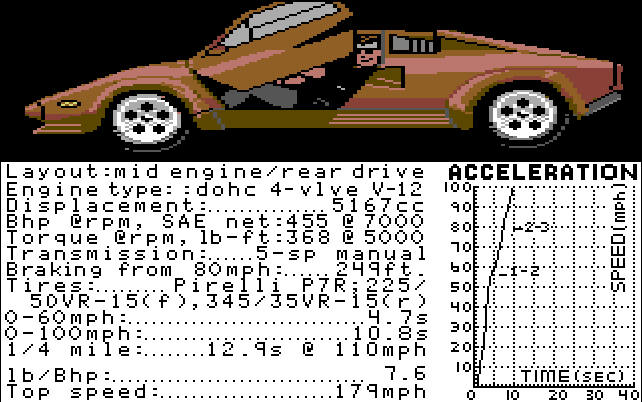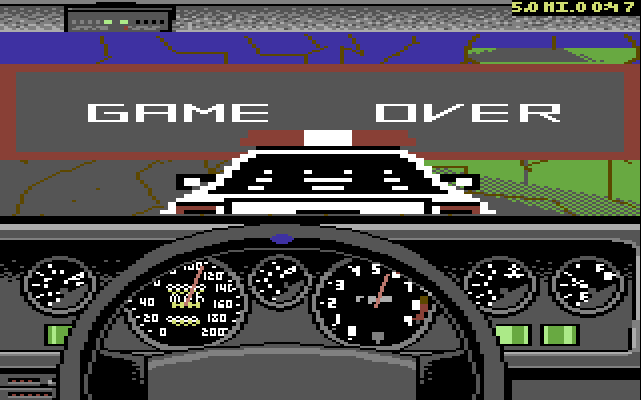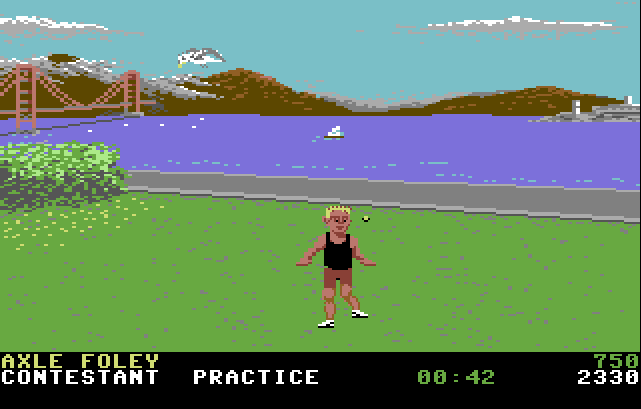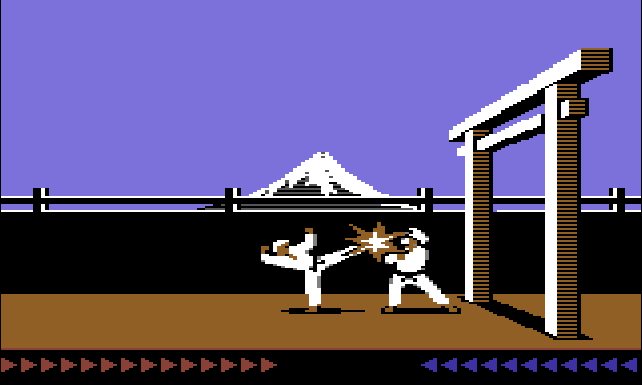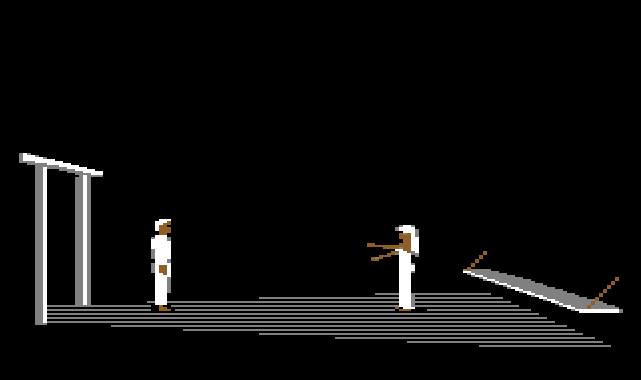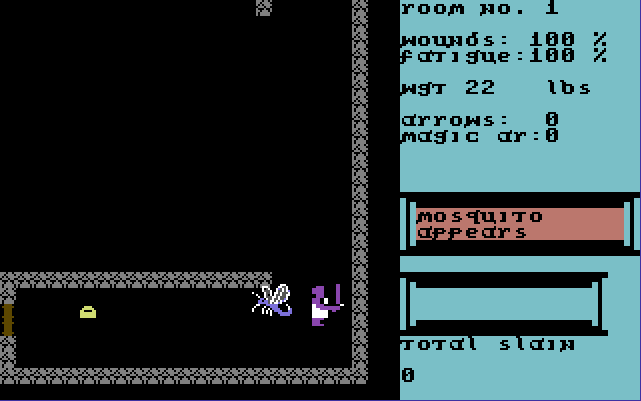Metroid Prime 3: Corruption
I got a Nintendo Wiii a while ago, and once I tired of the typical Wii Sports games, I looked around for a new game. I settled on Metroid Prime 3: Corruption. It had just come out at the time, I had fond memories of the original (though I’m not sure I ever finished it), and it had great “reviews” at all the gaming sites (even user reviews hovered around 8-10 out of 10). Of course, I’m much more of a casual gamer, so what I’m looking for is typically a bit different than the hardcore gaming crowd. While I can see why the game got good reviews, I really did not enjoy this game. It’s got some positive points, but there are lots of negatives that just dragged the whole experience down for me.
Again, I’m a casual gamer, and during the past few months, I haven’t had a lot of time to play video games. I think this context is a big part of why I didn’t enjoy this game, but I’ll get into that later in this post. Another thing to keep in mind: This is my first Metroid game since the original, and though I have a pretty good opinion of that game, I don’t really remember much about it either. Here are some thoughts on various aspects of the game:
- Combat: The game is basically a first-person shooter, so combat is pretty straightforward. The controller scheme for the Wii is well done and easy to adjust to. Basically, you use the nunchck to move your character around, and the Wiimote controller controls where you look (and where you shoot). Pressing A shoots, which is a little strange at first, because B is the trigger on the Wiimote, but it works well enough. Sometimes I thought there was a lack of precision in the targeting method, but it seemed to work reasonably well. Sometimes it got annoying to constantly have the Wiimote pointed directly at the screen – if your hand strays, your viewpoint does too, and that can be disorienting. Lots of trademark Metroid weapons make an appearance along with a new hyper mode. Activating hyper mode requires you to empty one of your energy tanks (each energy tank is made up of 100 life points, and you continually gain energy tanks as the game progresses), but you also get a temporary weapons boost. Personally, I found hyper mode annoying and stupid (more on this in a bit).
- Bosses: One of the primary draws of adventure games like this are bosses, the enemy that shows up at the end of a level. Usually, battling a boss requires a lengthy effort and you need to use a wide array of weapons to defeat them. Often, there’s a series of fun “mini-games” that you play in order to defeat a boss. In Metroid 3, this is certainly the case. The bosses are powerful and indeed take all of your firepower to defeat. Unfortunately, the bosses end up being more annoying than anything else. First of all, it’s awfully difficult to figure out which weapon you should be using and in what situation. If it wasn’t for this walkthrough, I would have given up on the game a long time ago. For example, here’s how you defeat a boss named Korakk:
Riding Korakk is a Pirate Hussar. Get rid of him first, quickly and easily, with the Hyper Beam. After that, downing the Korakk is a fairly easy but also dangerous process. Keep it targeted and be patient as it hops around. When its mouth glows, it’s getting ready to shoot its tongue out (it won’t really do it unless you’re in front of it where it can see you). As soon as the tongue comes out, fire a shot at it to retract it and daze the Korakk.
Once that happens, immediately roll into a ball and go under the Korakk’s glowing belly. Set a few bombs so that they explode and hit the belly. Then zoom out and go back to normal.
Repeat this at least one more time. When the second set of bombs hit, position yourself just behind the Korakk as it will finally collapse and expose its rear end. Target it and yank it with the Grapple Arm. The Korakk will then reel on its hind legs and expose its belly. Circle over to the front of it, go into Hypermode and plug the belly with a few Hyper Beam shots.
How are you supposed to know these things if you’ve never played the game before? I don’t know, maybe I’m just dense, or maybe it has something to do with previous installments of the series that I haven’t played. Heck, even once you do know what to do, the process of actually doing it is usually a frustrating exercise in button pressing. In some ways, the bosses are kinda neat, but really, they just ended up frustrating me. By the time I got to Mogenar, a particularly difficult boss (and apparently I’m not on my own, as a quick search confirms that a lot of people found this boss frustrating), I was at the end of my rope, and after three or four attempts (each taking a long time, a half-hour at least), I gave up. I’m not going to play the game anymore. I think the biggest problem is that Mogenar requires you to go into hyper mode too often, and I apparently didn’t have enough energy tanks for the battle. The thought of backtracking to a previous level and then making my way back to Mogenar is enough to keep me away for good.
- Other Game Play: The most frustrating thing about this game is the lack of save points. This became especially annoying when my schedule got really busy, as I didn’t have much time to play, and the way the game is set up, you have to play for at least 1 hour (frequently 1.5-2 hours) before reaching the next save point. The game doesn’t make you start from the very beginning of the level when you die, but it does if you turn the game off, so there’s some annoying repetition involved here. The other thing that bothered me about the game is that it seems like it’s trying to create an open ended world (a la the GTA series), yet there is a very specific linear progression that you must go through. What this essentially boils down to is a lot of backtracking, realizing that you forgot something, redoing the same level, and then backtracking again to get back to where you were. I had a hard time figuring out the proper sequence of events at some points, and the game doesn’t seem to allow multiple solutions to a problem (which is what usually happens when you have a more open-ended world). I don’t mind an open-ended world and I generally like freedom within a game’s world. Exploration can be a lot of fun, but this game was trying to get that while also railroading you along a specific path. In the end, the level design was just annoying and repetitious, and I quickly got bored with it.
- Puzzles: The game mixes battle scenes with little puzzles, and these I actually kinda enjoyed. Where the bosses were difficult to figure out and frustrating, I didn’t seem to have as much trouble with the puzzles. However, there really weren’t that many puzzles and the game was dominated more by battles than puzzles.
- Visuals and Audio: This is actually another strong point of the game. The visuals are well done and compelling. The music and voice acting is pretty good as well. The character and level design is a little uneven, but overall it’s well done. Samus looks great, and her various equipment is also well designed. This is probably the prettiest game I’ve played on the Wii (though I should mention that I haven’t played that many games:P)
- Story: Ultimately, I found the story to be rather dull and uninspired. Perhaps I’m just missing something from the previous installments of the game, but the story follows the bounty hunter Samus Aran, who seems to be on a mission to battle Space Pirates and rid the universe of something called Phazon. I’m a little confused by this, because at some point Samus gets infected by Phazon, and the Galactic Federation decides that instead of ridding her of the Phazon, they’re just going to give her something called a Phazon Enhancement Device (P.E.D.) That seems smart, right? Got infected by something evil? Great, let’s enhance it! This leads to annoying periodic phazon episodes that drain your life throughout the game. There are also several other bounty hunters which are supposedly on my team, but which don’t seem to serve any purpose other than to betray me (presumably because of the wonderful P.E.D.) I don’t know, this whole universe seems much more confusing to me, and it’s nothing like what I remembered in the original Metroid. I’m assuming that my lack of experience with the other Metroid Prime games is causing the problem here, but still, the story seemed silly.
- Usability: I’ve already mentioned several issues. The biggest problem, again, is the lack of save points and the confusion as to how to proceed at various points in the game (both because of the level design and because of the confusing bosses). The controller scheme seems to work well enough, and I think it’s about as good as it will get for a FPS on the Wii. There are some more advanced button combinations that need to happen at various points of the game, but nothing too difficult to use (a big issue for me was that I had trouble finding 2 hour timeslots to play, so I had to reacquaint myself with the controls every time I played).
I’m not very impressed with this game. If I were to give it a rating, it would be somwhere in the 4/10 range, and I’m really surprised that more people aren’t mentioning any flaws in this game. I wouldn’t recommend this to casual gamers, or those who don’t have a lot of time to devote to gaming. Hardcore gamers or those in love with the Metroid franchise might fare better (a lot better, if reviews are to be believed). Then again, I’m not the only one unimpressed. This person does an interesting job summarizing one of the common complaints of the game:
I mean, honestly… If I wanted to receive orders from someone, I would have purchased Halo or Half-Life. If I wanted to be sent on a linear mission to perform some menial task, I would have bought Zelda. If I wanted to be placed alongside a team of other mercenaries, only to witness each one die on their own or fight them after they turn against me, I would have bought Metal Gear. If I wanted to play mini-games, I’d play Final Fantasy. And if I wanted to spend my time accumulating achievement points, I would have bought a 360 by now.
I didn’t buy Halo or any of these other games, I bought Metroid. In the Metroid I know, you start out alone. You have no map, no friends, and no sunlight. You have a gimped weapon, no bombs, and no guide to get you acclimated to the environment. The satisfaction in playing Metroid doesn’t come from finishing the game. It comes from exploring it and surviving it, and occasionally finding an item to help you along.
It’s a dark game with eerie music. It’s a simple, paranoia-inducing game where if something moves, or is even facing you, you shoot it (because it sure as hell isn’t going to say “Hi Samus!” and give you a briefing). It’s a non-linear game where the replayability comes not from finishing quests in less time, but from attempting to explore further with fewer items.
Again, I have no idea what to say about what makes a Metroid game a Metroid game, as I’ve only played the original and don’t remember much, but what this person is talking about sounds a lot more fun than what Metroid Prime 3 actually was.
As a casual gamer, this game comes nowhere near my standard for the adventure genre, which is God of War. I had my issues with that game as well (*cough* Hades level *cough*), but overall, I was really impressed with a lot of aspects of the game. On a completely abstract level, I actually looked forward to playing GoW, whereas, I almost dreaded playing Metroid (again, consider my context – I don’t want to spend a required 2 hours playing the game when my time is at a premium).
Anyway, I traded a friend Metroid for The Legend of Zelda: Twilight Princess. I like this a lot more than Metroid, but there are still issues. Just when I was getting used to the controller scheme, they up and changed my character into a wolf. The wolf level is mildy boring too, though it’s still much better than Metroid. I don’t anticipate Zelda frustrating me as much as Metroid, but I guess you never know. I’m much more into the Zelda universe though, so I have a little incentive to keep up with the game. As for the Wii in general, the next game I’ll actually get excited about is the announced Star Wars game. Now that is something I’ll be willing to dedicate a lot of time towards! Otherwise, I might just invest in a little sports game or something (Rockstar’s Ping Pong maybe? Seems like a good fit for the Wii, though I gotta wonder how different it is from Wii tennis).
